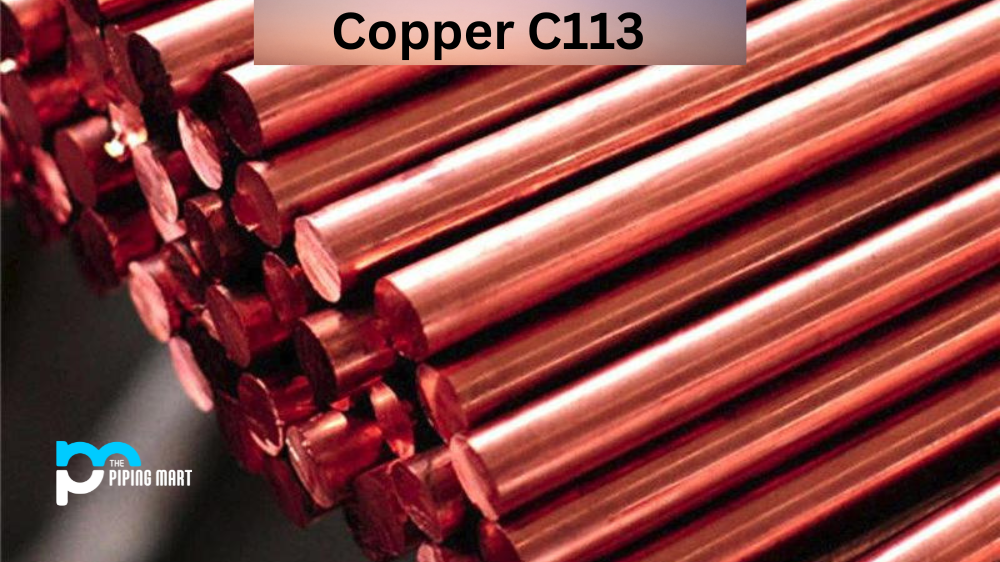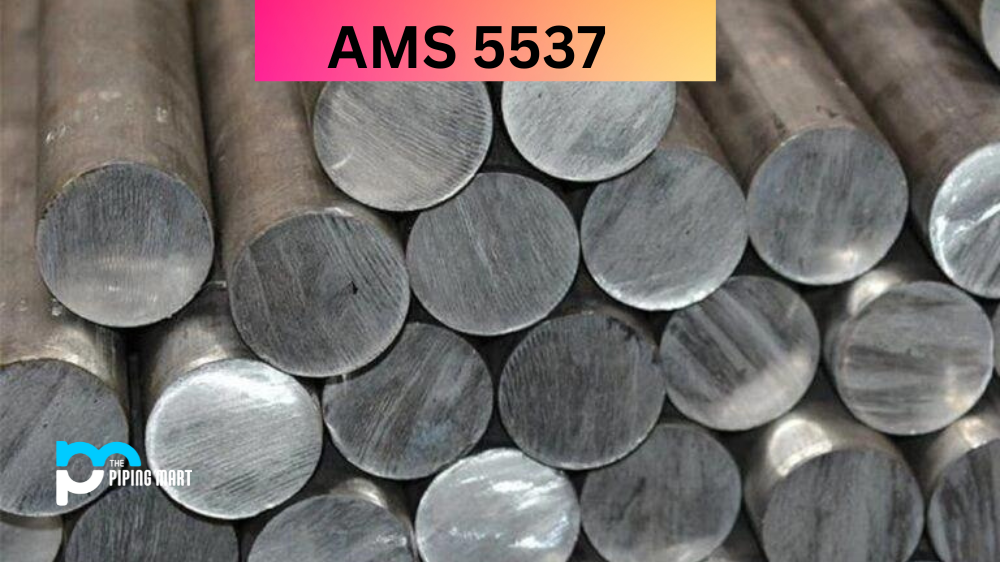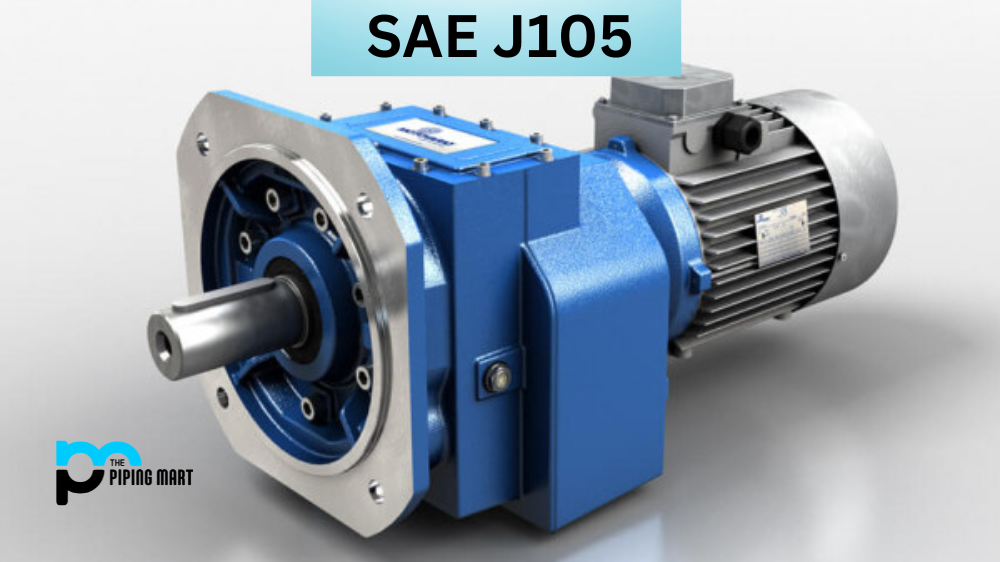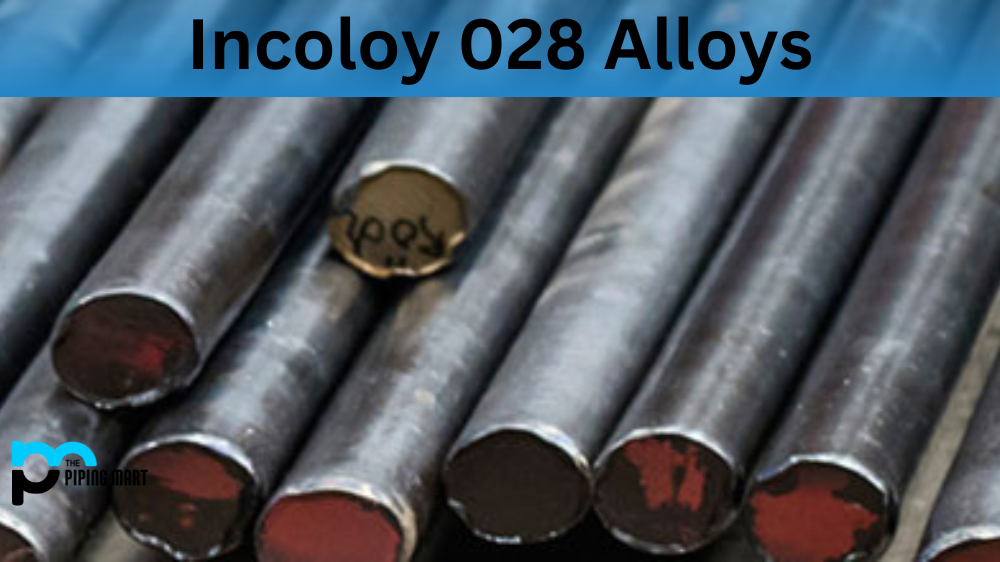C11300 is an alloy composed of copper and other elements such as nickel, tin, and zinc. It has a range of mechanical, physical, and corrosion properties, which make it a useful material for many applications. In this blog post, we will explore the composition, mechanical properties, physical properties, uses, corrosion resistance, heat resistance, heat treatment options, machining techniques, and welding procedures for Copper C113.
UNS C11300 Composition
Copper C11300 is composed of 99% copper, with the remaining 1% being nickel (maximum 0.35%), tin (maximum 0.20%), zinc (maximum 0.04%), lead (maximum 0.03%), phosphorus (maximum 0.02%) and sulfur (maximum 0.01%).
| Element | Content (%) |
|---|---|
| Cu | 99.90 |
| O | 0.04 |
| Ag | 0.025 |
UNS C11300 Mechanical Properties
Cu C11300 offers excellent ductility with a good tensile strength between 35-45 ksi as well as a yield strength between 15-25 ksi depending on tempering temperatures and other factors such as strain rate used during testing. It also has good fatigue strength when tested with fatigue cycles up to 10^6 Hz.
| Properties | Metric | Imperial |
|---|---|---|
| Tensile strength, ultimate | 221 – 455 MPa | 32100 – 66000 psi |
| Tensile strength, yield( depending on temper) | 69.0 – 365 MPa | 10000 – 52900 psi |
| Elongation at break (in 101.6 mm (4 in.) | 55% | 55% |
| Modulus of elasticity | 117 GPa | 16970 ksi |
| Poisson’s ratio | 0.34 | 0.34 |
| Machinability (UNS C36000 (free-cutting brass) = 100%) | 20% | 20% |
| Shear modulus | 44 GPa | 6380 ksi |
UNS C11300 Physical Properties
This alloy C11300 has a relatively high electrical conductivity rating at 100 % IACS at room temperature, and its thermal conductivity rating is also impressive at 400 W/m*K near room temperature due to its high copper content. The density rating for this material is 8.89 g/cm3 at normal temperatures as well.
| Properties | Metric | Imperial |
|---|---|---|
| Density | 8.89 – 8.94 g/cm3 | 0.321 – 0.323 lb/inÂ3 |
UNS C11300 Equivalent
| ASTM B1 | ASTM B188 | ASTM B246 | ASTM B442 | ASTM B506 |
| ASTM B116 | ASTM B189 | ASTM B272 | ASTM B47 | ASTM B623 |
| ASTM B152 | ASTM B2 | ASTM B286 | ASTM B470 | ASTM B8 |
| ASTM B172 | ASTM B224 | ASTM B298 | ASTM B48 | MIL B-20292 |
| ASTM B173 | ASTM B226 | ASTM B3 | ASTM B49 | QQ B575 |
| ASTM B174 | ASTM B228 | ASTM B33 | ASTM B496 | SAE J461 |
| ASTM B187 | ASTM B229 | ASTM B355 | ASTM B5 | SAE J463 |
UNS C11300 Uses
Due to grade c113 combination of mechanical properties and physical properties in addition to its corrosion resistance abilities, it can be used in many industries such as aerospace engineering, where it is used in pipes or tubing due to its excellent heat transfer capabilities or even in the automotive industry where it can be used in engine components due to its wear resistance qualities when hardened properly through heat treatments or annealing processes like cold working or hot working respectively.
Corrosion Resistance
This alloy offers excellent corrosion resistance because it contains low levels of sulfur and phosphorus, which help reduce the chances of galvanic corrosion. Additionally, it also provides protection from acid solutions thanks to the presence of tin, which helps prevent pitting from occurring.
Heat Resistance
The presence of nickel helps increase the heat resistance qualities of this material significantly, allowing it to withstand temperatures up to 600 °C without experiencing any major damage or degradation.
Heat Treatment
This alloy can be hardened using various heat treatments such as annealing, cold working, hot working, solution annealing, stress relieving, tempering, etc.
Machining
Copper C113 can be machined using conventional tools such as drills, taps, saws, grinders, etc.
Welding
This alloy can be welded using TIG welding techniques but should not be welded with oxyacetylene due to the high risk of cracking during the cooling process afterwards.
Conclusion
In summary, Copper C113 is a versatile alloy that offers excellent mechanical properties combined with excellent physical properties making it an ideal choice for many different applications across various industries. Its ability to resist both corrosion and high temperatures makes it suitable for use in extreme conditions, while its machinability allows for easy fabrication into complex shapes without too much effort. Furthermore, this alloy can also be welded using TIG welding techniques, making it suitable even in situations where welding is required making it one of the most popular alloys available today!

Abhishek is a seasoned blogger and industry expert, sharing his insights and knowledge on various topics. With his research, Abhishek offers valuable insights and tips for professionals and enthusiasts. Follow him for expert advice on the latest trends and developments in the metal industry.




